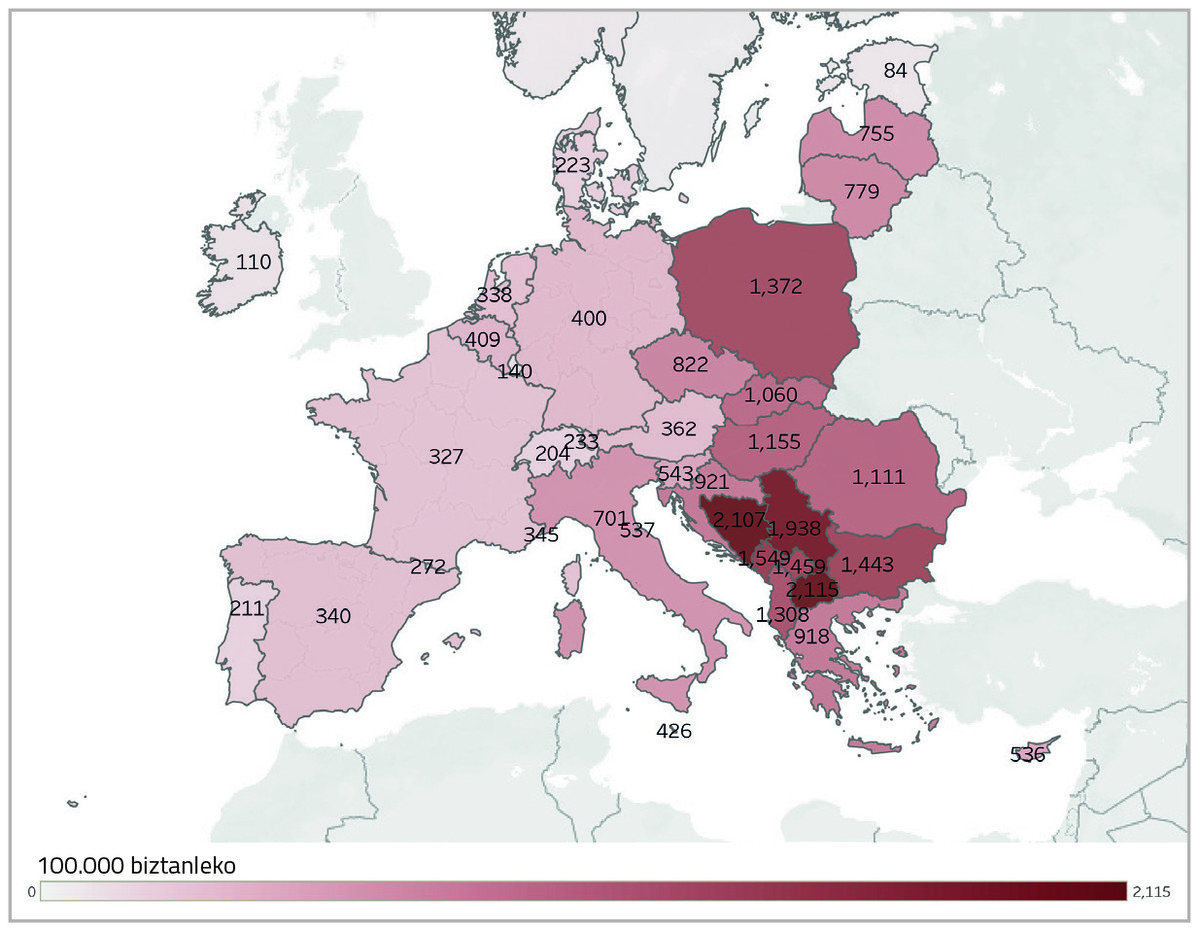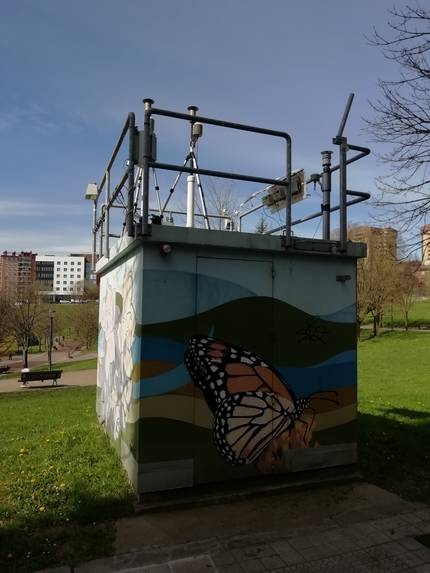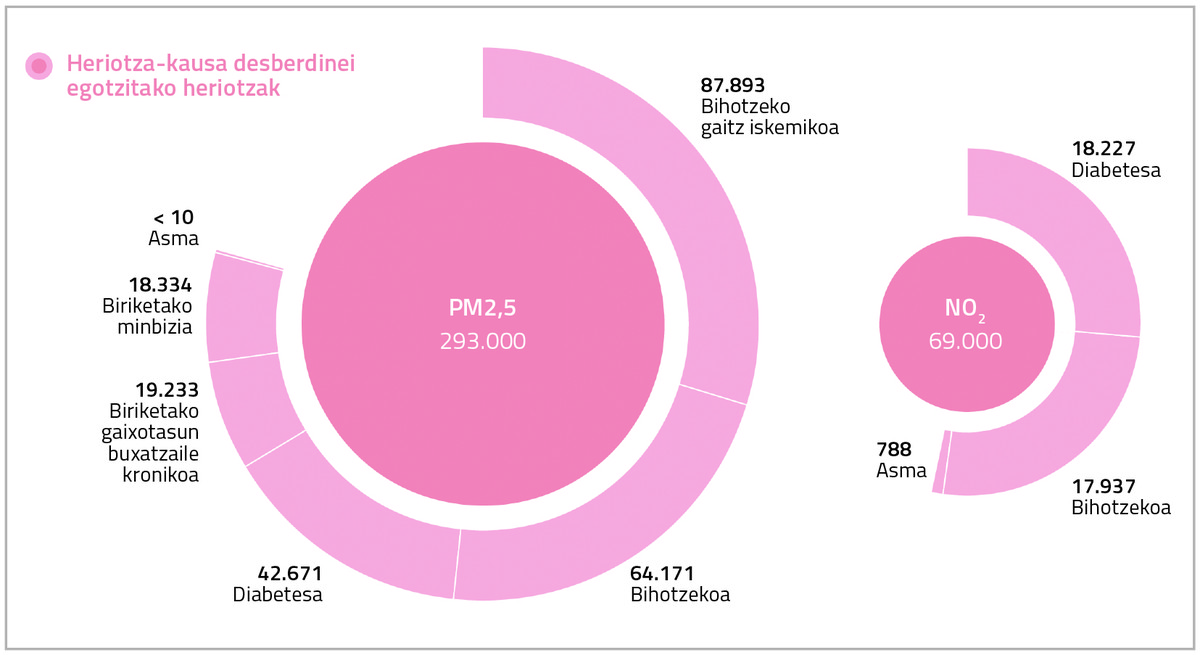Cleaner air for health
The European Commission has adopted new measures to improve air quality. The Commission expects countries to comply with the new 2030 measures and thereby prevent premature deaths from air pollution. Indeed, according to data provided by the European Parliament itself, air pollution in the European Union causes 300,000 premature deaths a year.

For public health, air pollution has been a cause of concern for years, as it is clear that the pollutants we breathe have direct and indirect effects on health. Public health researcher Aitana Lertxundi Manterola, among others, is dedicated to the investigation of these conclusions. And, according to him, the measures always go behind. “However, the measures now to be taken affect precisely the pollutants that do the most damage to health. In fact, most people live in cities and aim to reduce the stressors of cities; specifically, air pollutants.”
In Europe, the air quality directive was established in 2008. In order to respond to this, it is necessary to perform measurements of different pollutants and in the Autonomous Community of the Basque Country the head of the air quality measurement network is Nadia Arkarazo Arrizabalaga. As he explained, in Spain it is the responsibility of the autonomous communities to ensure air quality: “To do this, we have fixed stations in the countries. Inside, they have examiners or measurement monitors that measure the concentration of the contaminant, which constantly collect and analyze samples. Each examiner is connected at all times to the data collection terminal which, every quarter of an hour, calculates and receives the average. These data are continuously transmitted to the data center, validated and published on the Basque Government’s air quality website.”
The main pollutants that measure are sulphur dioxide (SO2), nitrogen oxides (NO and NO2), tropospheric ozone, carbon monoxide (CO), benzene and suspended particles. The latter are among the most problematic pollutants of different sizes. Air quality legislation contains two parts depending on their impact on health and the environment: PM10 (particulate matter of diameter less than 10 µm) and PM2.5 (less than 2.5 µm).
As to their origin, they may be of natural origin, such as marine aerosols, mineral, pollen or other organic substances emitted by plants. But most of them are anthropogenic, i.e. due to human activity: traffic, industry, construction, domestic heating… On the other hand, they can be emitted directly (primary origin), such as diesel engine smoke and particles emitted by cement and steel factories, or by chemical transformations derived from precursors (nitrates and sulfates) and condensation of volatile organic compounds (secondary origin).
Directly in health
It is more difficult to measure health effects than to collect contaminant concentrations. “To some extent, we are all laboratory renters,” said Lertxundi. In fact, these conclusions have been known over time. “After all, experimental studies with people cannot be done to see the effects of pollutants; they would not be ethical.”
In any case, Lertxundi has pointed out that some experimental research has been carried out in the past: “For example, in the United States, some proposed that diesel engines were better for the environment than gasoline engines, because they emit less CO2. However, they observed that particulate matter was produced in combustion and could pose a health risk. To do this, 40 volunteers with heart and traffic problems were recruited and distributed in two cabins, half and half, and were pedalled on the static bikes. Some were given clean air to breathe, and others were given air that contained the diesel combustion particles. The electrocardiogram monitored the heart’s activity and showed that those affected by the inhalation of diesel particles exerted worse activity than those who breathed in clean air.”
Lertxundi has insisted that, in 2007, this research was carried out, which at present would not be approved. Without doing so, many other studies have demonstrated the risk of diesel combustion particles. Lertxundi presents another experimental study of the same year, more ethical than the previous one: “In London there were two groups: some had to walk down Oxford Street, that is, at that time there were many buses with diesel engines; others, by Hyde Park. Lung function was measured every hour, and in the third hour, they underwent an analysis to determine their condition. Thus, through an experimental study, it was confirmed that the combustion of diesel engines was harmful to health.”
Sharpening the limits
The implementation of measures to limit atmospheric pollutants was carried out taking into account the evidence of experimental research and, above all, of epidemiological studies carried out over the years. “From behind”, therefore, as Lertxundi said. And now they're even more limited. Arkarazo explains why the measures have been renewed: “In 2019, the European Union presented the Green Pact aimed at achieving climate neutrality and eliminating pollution by 2050, including greenhouse gas pollution. This involved, firstly, the revision of the 2008 Air Quality Directive and the emergence of four gaps. First, the limits set did not correspond to those recommended by the World Health Organization (WHO). Secondly, the action plans to return to normal values after crossing the border were either not sufficient or not effective. Thirdly, the way in which data were collected and provided was not the same in all States, that is, harmonisation was needed. And, finally, the same happens with the way to follow up, even within some states, as is the case with the Spanish communities,” Arkarazo has listed.
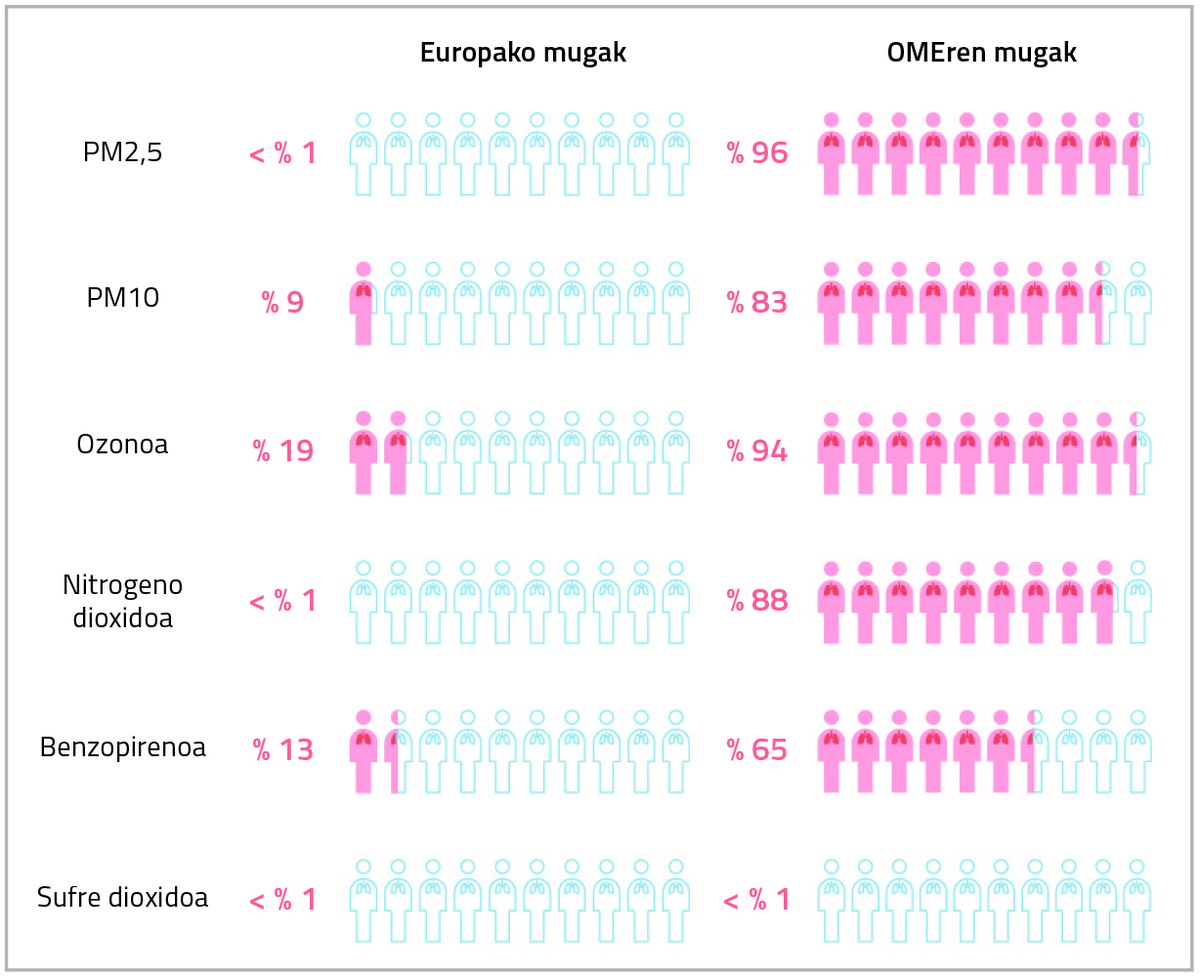
The directive has therefore been renewed. “To begin with, the limits of pollutants have been tightened. They are not as strict as those recommended by the WHO, but they have been reduced considerably from the values set, by half or more, depending on the pollutant. Compliance by 2030 and the importance they have attached to the action plans should be highlighted. We have to foresee, through modelling, etc., whether we will meet those values in 2030 and, if we see no, we have to start making the way to meet them.”
Arkarazo explained that this has not been the case so far, corrective measures have been taken in the light of the data reflected in reality. The new directive requires anticipation. In addition, other pollutants that were not previously taken into account at research level will have to be measured: ultrafine particles, more tropospheric ozone precursors, ammonia, black carbon (carbon particles formed in partial combustion or by thermal decomposition of hydrocarbons).
In addition, the limits will be reviewed every five years, as the ultimate goal is to reach the values set by the WHO in 2050. Finally, the new directive states that anyone who has suffered damage to health from air pollution will be able to seek compensation, which the Member States will have to ensure. Arkarazo added that it also gives more importance to information to citizens.
In the next generation
Research in recent years has shown that air pollutants affect not only the circulation and respiratory system, but also systems throughout the body, both at the time of exposure and in the long term. And in the next generations, you also notice the damage. For example, Lertxundi has been participating in the INMA project for years. This project, launched in 2006 through the collaboration of several Spanish centers, aims to know the impact of environmental pollutants on the physical and cognitive development of children from pregnancy.
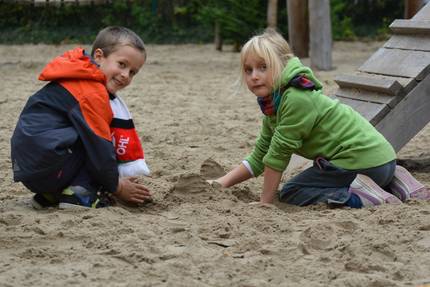
Lertxundi pointed out that the health effects of pollutants cannot be studied in isolation under any circumstances. On the one hand, we get them from many sources; air is just a source, and exposure to air pollutants varies by place and time. On the other hand, health effects also vary according to age, genetics, food, etc. “And why do we pay attention to children? Because they live under the effects of pollutants, because they are not small adults, because they are growing up, and their immune system and their forms of detoxification are not fully developed. They are therefore more vulnerable to environmental pollutants.”
The research is long and complex, and in terms of air quality, for example, in the INMA project air particles were analyzed between 2018 and 2022. “Within that, we analyzed the metals associated with the particles: iron, chromium, nickel, copper, manganese… Among them, we had COVID-19, which was a kind of intervention, as the concentration of these pollutants decreased. And there you see the influence. The same happened in the China Olympics, where measures were taken to clean the air from the cities at that time, newborns were heavier than before taking action.”
Multiple and varied factors
“Three are the main sources of air pollutants: one third comes from buildings’ calorific systems, another third from traffic and the last from industry,” said Lertxundi. “In COVID-19 the industry was disrupted and, before and after, some companies have been shut down. These types of modifications affect the air quality of the surrounding inhabitants, as well as those occurring in urban planning and transport infrastructure”.
However, it has warned that it is not necessary to live very close to the source of the pollutants to be exposed to them: “The large diameter particles are heavy and are close to the spring, but the thin ones can go far, even more so considering that in our orography the narrow and long valleys are frequent.” The socio-economic situation does not always predict well the exposure of the population: “It is true that there was a habit before of making the workers’ houses alongside the factories, so the workers were more exposed. But the houses in the centre of the cities are expensive and have been heavily trafficked for many years. Low-emission areas have now been declared at the heart of the capitals, but the relationship between the socio-economic situation and exposure is not always what we think.”
Now, they have a project at the CAPV and other Spanish autonomous communities to analyze the impact of environmental pollutants on mental health. “In addition to air pollutants, we will investigate many others: those we receive through water, those from diet, drugs… and also the effects of noise. We want to see how mortality decreases when these parameters improve. In California, for example, this impact was clearly seen through an action plan to reduce air pollution. In this sense, we in the European Union are lagging behind the United States.”
Need for a comprehensive vision
Thus, both Arkarazo and Lertxundi have welcomed the tightening of borders, but do not believe that it is sufficient. In Arkarazo’s view, for measures to be genuinely effective, the administrations should work together. “We should work holistically. We cannot change things if we take some measures and do not join us in the Department of Transport, Industry or Public Health. Once territorial divisions have been overcome, all departments should act together.”
Lertxundi also sees the need to make a leap from the point of view of public health and society: “We have made society and health understand the importance of physical exercise. For something similar would be needed with the quality of the environment. As electric cars pollute less than combustion engines, it is good to drive them, but it is still better to encourage the use of bicycles within the city and to have a good public transport network. The way forward would be for people to understand and demand it, and for that we have to do a great amount of pedagogical work. For example, by designating low-emission areas, people should be made to see their benefits and, at the same time, not be harmed.”
Both experts agree that more needs to be done than that despite the agreement that pollutant measures should be reduced. In addition, both have highlighted the relationship between air pollution and global warming. One more reason to address air pollution once and for all, with a comprehensive approach and seeking consensus from the agents.
Buletina
Bidali zure helbide elektronikoa eta jaso asteroko buletina zure sarrera-ontzian






